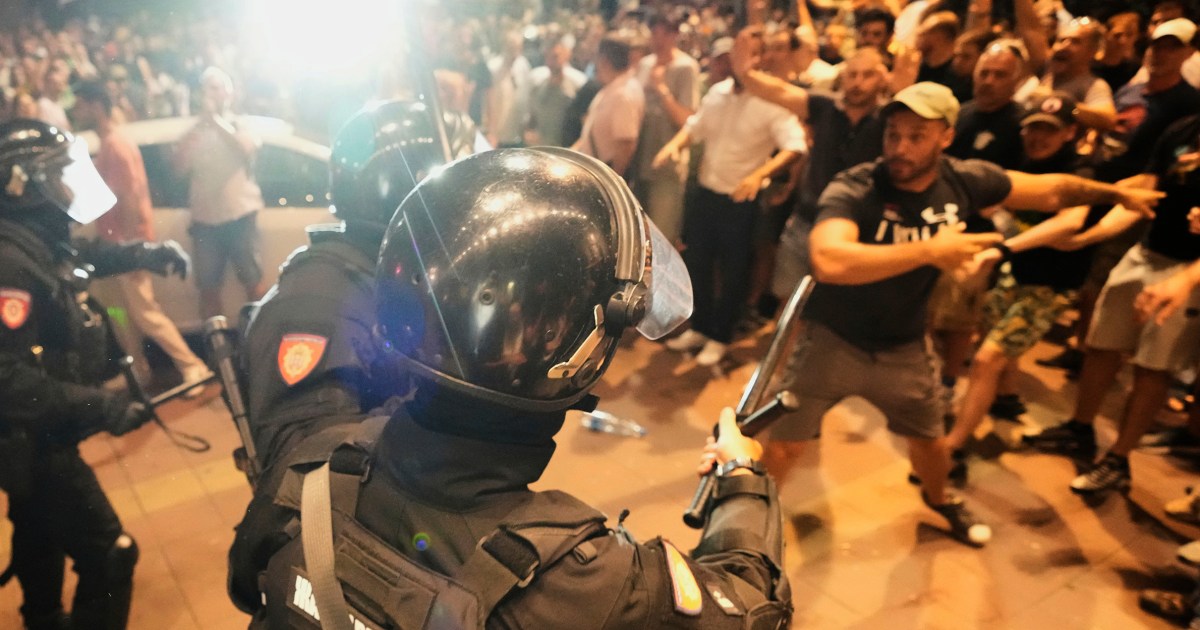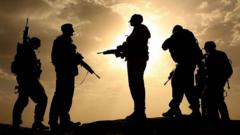What’s Fueling the Escalation of Serbia's Anti-Government Protests?

Understanding the Current Situation in Serbia: Protests Against President Vucic
In recent days, Serbia has witnessed a significant escalation in protests against President Aleksandar Vucic, igniting a political storm in the Balkans. Following more than nine months of sustained demonstrations, the atmosphere has turned increasingly volatile as clashes between anti-government protesters and Vucic's supporters erupted in multiple cities. This article delves into the underlying causes of these protests, the recent developments, and the broader implications for Serbia's political landscape.
The Background of the Protests
The seeds of the current unrest were sown in November 2022 after a tragic incident in Novi Sad, where a train station canopy collapsed, resulting in the deaths of 16 people. This disaster raised serious concerns about corruption and negligence in state infrastructure projects, fueling public outrage. As a result, protests began to emerge, initially led by university students advocating for accountability and transparency in the government.
What Sparked the Recent Clashes?
The protests took a more confrontational turn recently, particularly on Wednesday, when supporters of Vucic clashed with anti-government demonstrators in cities like Novi Sad and Belgrade. The situation escalated dramatically with reports of flares being thrown and windows smashed at the offices of Vucic’s ruling Serbian Progressive Party. Riot police were deployed to restore order, and the Interior Minister Ivica Dacic called for a return to law and order amidst rising tensions.
The Scale of the Protests
The scale of the protests is noteworthy. Thousands of demonstrators have gathered not only in Belgrade but across several cities, including Kraljevo, Kragujevac, Cacak, and Nis. The protests have attracted a diverse crowd, including students, workers, and families who have come together to express their frustration over Vucic's administration and its perceived autocratic tendencies.
The Role of Riot Police
Riot police have been a prominent presence during these protests, often using tear gas and other crowd control tactics to disperse groups of demonstrators. The heavy-handed approach has drawn criticism, particularly in light of the largely peaceful nature of the protests prior to this escalation. The police's actions indicate a growing concern over maintaining public order amidst rising tensions.
Vucic's Response to the Protests
In the face of escalating protests, President Vucic has adopted a defiant stance, labeling the demonstrators as "thugs" and "terrorists." His administration has consistently framed the protests as violent and dangerous, despite evidence that many of the gatherings have remained peaceful. This narrative aims to delegitimize the protesters' grievances while rallying his supporters around a common cause.
Counter-Demonstrations: A New Challenge
As the protests gain momentum, Vucic's supporters have begun organizing counter-demonstrations, raising fears of violence between the two opposing factions. This development complicates an already tense situation and has led to confrontations, particularly during instances when both groups gather in close proximity. The potential for violence lurks as both sides become increasingly entrenched in their positions.
The Call for Early Elections
One of the primary demands from protesters is for early parliamentary elections, a request that Vucic has firmly rejected. The protesters, particularly the student-led factions, argue that a new election is necessary to restore democratic principles and accountability in governance. This demand reflects a deepening disillusionment with the administration's approach to governance and the political process.
Implications for Serbia's European Aspirations
Despite Serbia's formal aspirations for European Union membership, Vucic's administration has faced scrutiny regarding its commitment to democratic norms and freedoms. The ongoing unrest highlights the growing divide between the government's authoritarian tendencies and the public's demand for democratic reforms. This situation poses significant challenges for Serbia's path towards EU integration, as the bloc emphasizes democratic governance and human rights as prerequisites for accession.
International Reactions and Concerns
The international community is closely monitoring the situation in Serbia, with concerns about stability in the Balkans and the potential for violence. The EU and other Western nations have expressed their desire for peaceful resolution and dialogue between the government and the protesters. However, as tensions escalate, the risk of a broader conflict increases, raising alarms about regional stability.
Future Prospects: What Lies Ahead?
The future of Serbia's political landscape remains uncertain as protests continue to unfold. The government's response to the demonstrations will play a crucial role in determining the trajectory of these events. If the administration chooses to engage with protesters and address their grievances, it may help de-escalate tensions. Conversely, a continued crackdown on dissent could lead to further unrest and division within society.
FAQs
What are the main causes of the protests in Serbia?
The protests primarily stem from public outrage over a train station disaster that highlighted corruption in state infrastructure, leading to demands for accountability, transparency, and democratic reforms.
How has President Vucic responded to the protests?
President Vucic has labeled the protesters as "thugs" and "terrorists," rejecting their calls for early elections and framing the protests as violent, despite their largely peaceful nature.
What impact could the protests have on Serbia’s EU membership?
The ongoing protests and the government's response to them could significantly impact Serbia's EU membership aspirations, as democratic governance and respect for human rights are key criteria for accession.
Are there risks of violence during the protests?
Yes, the emergence of counter-demonstrations from Vucic's supporters has raised concerns about potential violence, especially as tensions increase between opposing factions.
What demands are protesters making?
Protesters are demanding early parliamentary elections and the resignation of Interior Minister Ivica Dacic due to recent violence at demonstrations, seeking to restore democratic principles in governance.
As Serbia grapples with its political turmoil, the situation serves as a reminder of the delicate balance between governance and the will of the people. Will Vucic's administration respond to the mounting pressure for change, or will the divide deepen further, leading to continued unrest? #SerbiaProtests #Vucic #Democracy
```Published: 2025-08-14 02:27:27 | Category: Trump GNEWS Search



